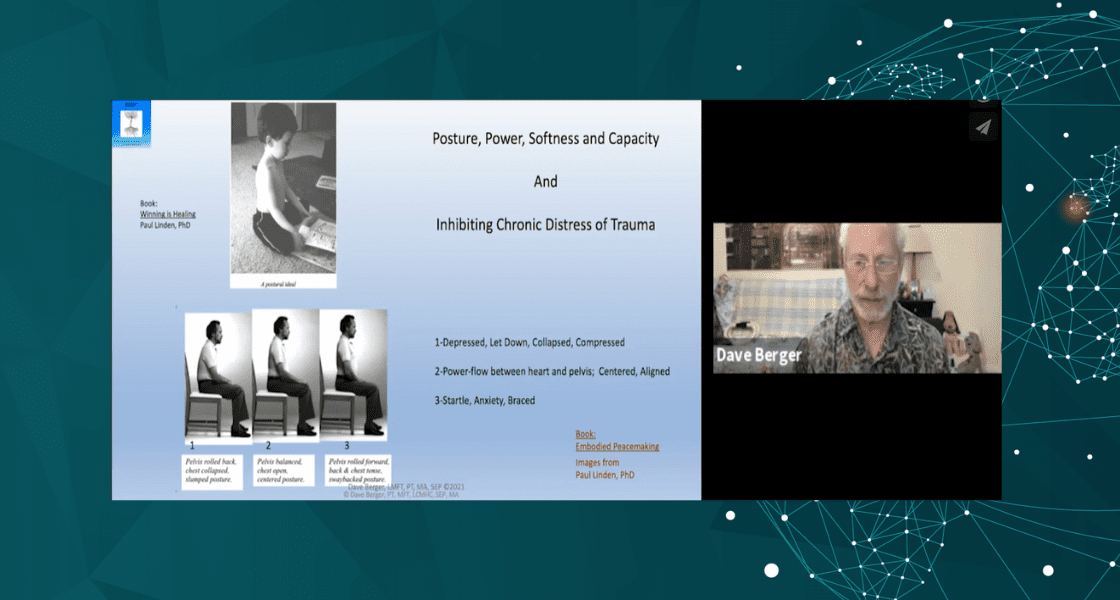The Pelvis – Dave Berger

Description
| Attachment and Bonding involve the neurophysiology of at least two people who co-regulate over time. This process, though, also includes the neuromusculoskeletal system: movement, facial expression, eye gaze and other postural and movement systems used for intra- and interpersonal communication. In SE it would fall primarily into the category of Behavior in SIBAM. The physical structures of the body—how they are used or not used, is vitally important in supporting or disrupting attachment and bonding, relational connection, and therefore intimacy in all relationships. The disruptions in adult relationships are, as they are in infant/parent relationships, interrupted by experiences of repair. Ed Tronick points out that only 30% of the time is there true attunement between infant and adult. He emphasizes how the rupture/repair process is important to strengthening of attachment and bonding. Likewise, John Gottman writes about the importance of ‘receiving a bid’ for interaction to maintain a relationship. Simply stated, a bid, or the offer and receiving of an invitation to connect and engage, is a process of repair in relationship. Often overlooked, again, is how the physical structures of the body—posture and movement—are involved in the repair/rupture cycles. This workshop will focus on central structures of the body that are involved in relational repair, attachment and bonding, and intimacy. The pelvis, specifically the pelvic floor, is the anatomical base of a startle reflex, anxiety, fear, flight and fight (in other words, sympathetic activation). It is also the anatomical base for fully settling after deactivation and receiving another human being (parasympathetic arousal). Eyes are a primary receiver of another human being in intimacy, attachment and bonding. The connection between receiving eyes and receiving pelvic floor allows for resilience and is a counter to relational rupture, anxiety, fear and trauma. This is at the functional and structural heart of complete social engagement, attachment and bonding. This is the heart relational intimacy. (While sensuous and sexual intimacy are one type of intimacy, these are not the focus of this workshop). This central connection of eyes with pelvic floor also supports relational repair. Intimacy posturing, how a person aligns his/her/their body to support receiving, is a state of ease between people who have and respect clear boundaries and can receive one another. Goal: Understanding and experiencing body usage to achieve this is a goal of this workshop. |
$17.99





